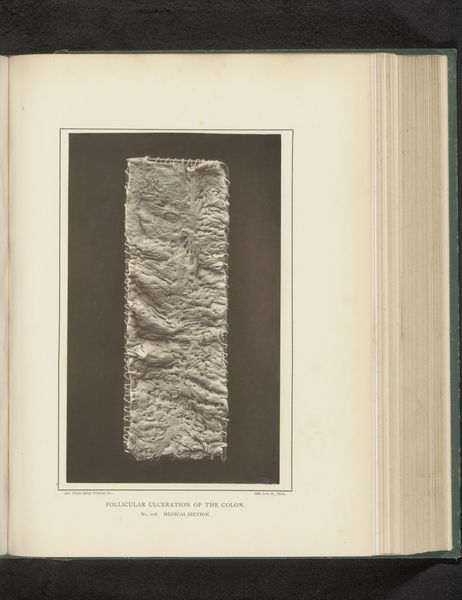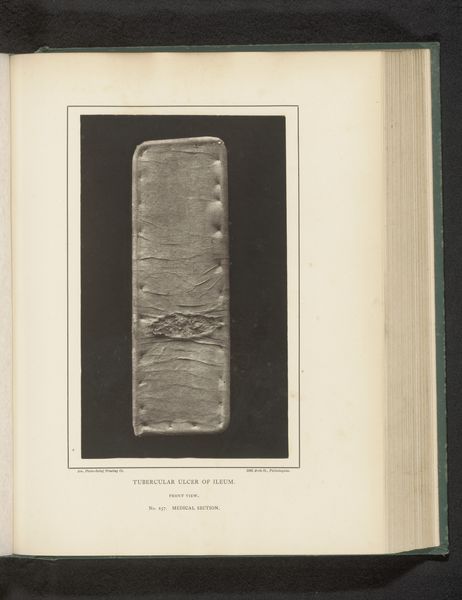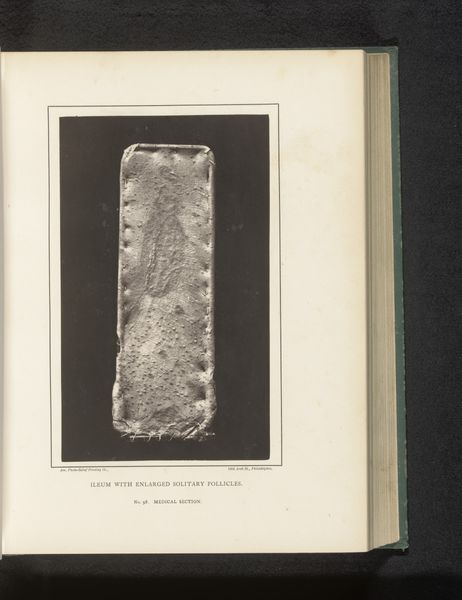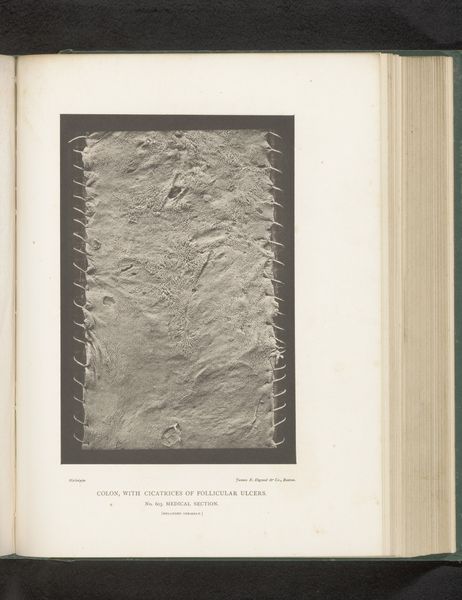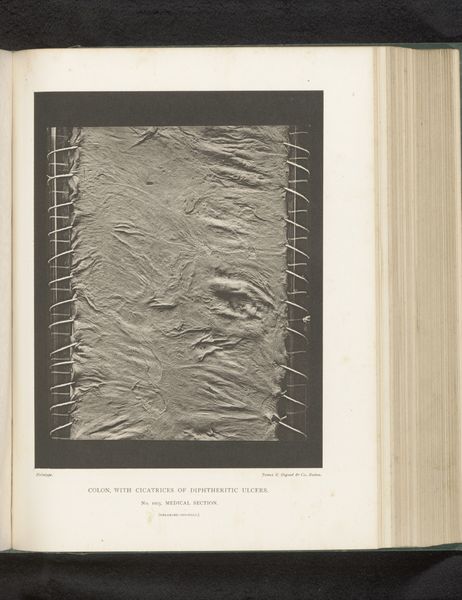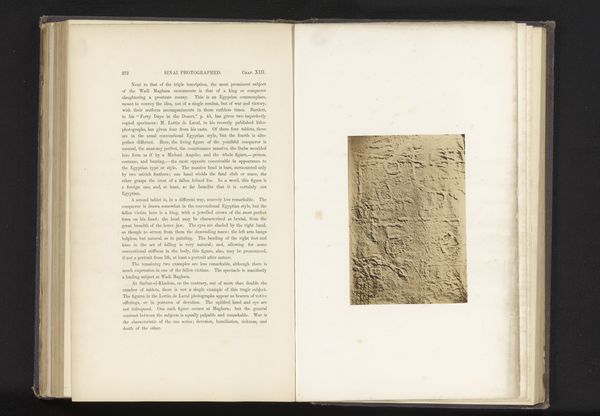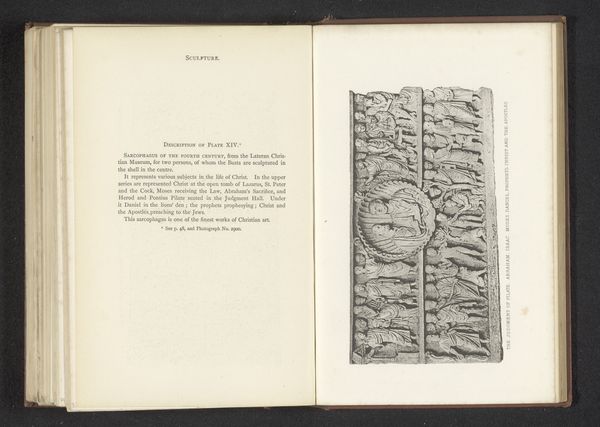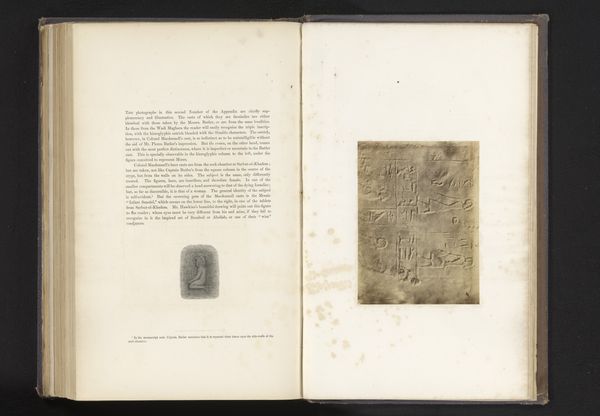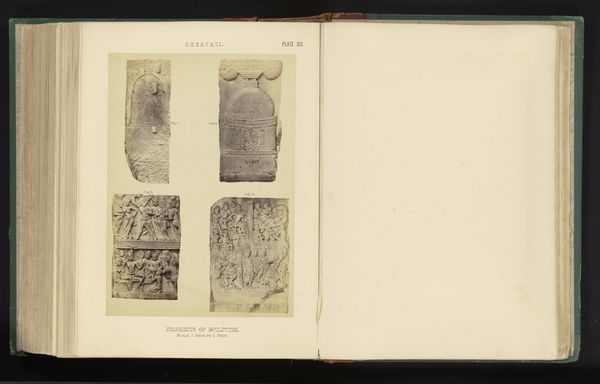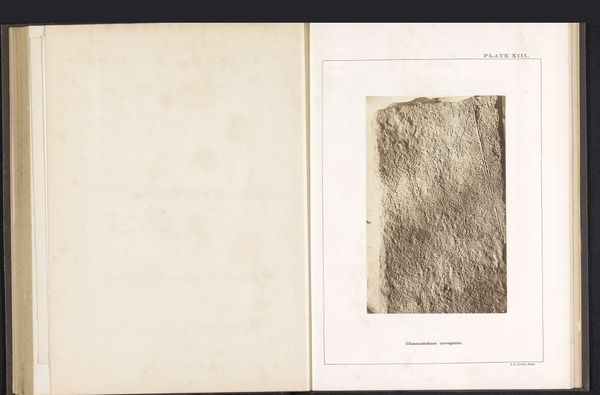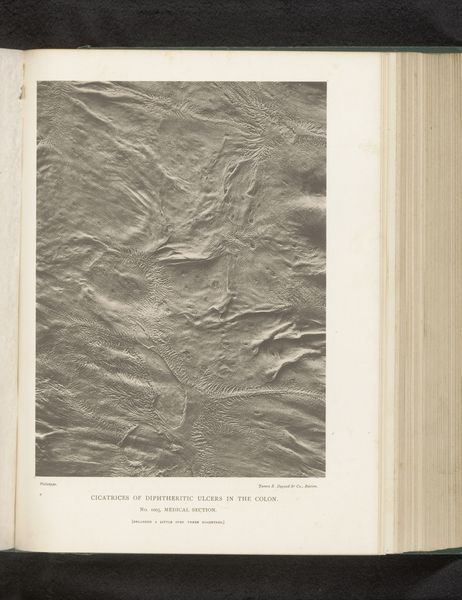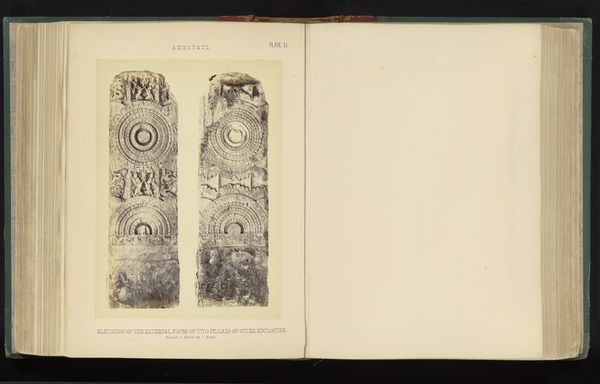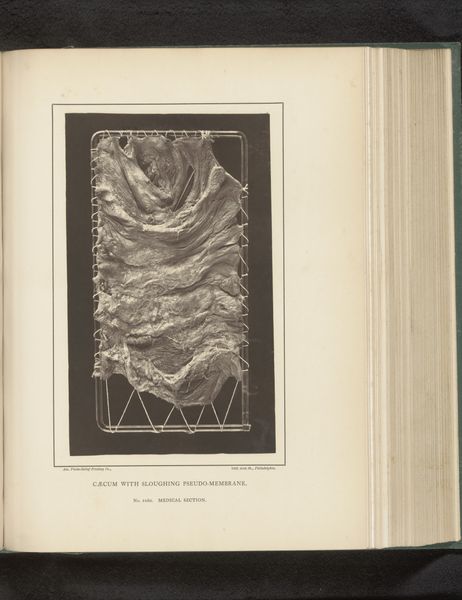
graphic-art, print, paper
#
graphic-art
#
aged paper
#
homemade paper
#
paper non-digital material
#
paperlike
# print
#
sketch book
#
personal journal design
#
paper texture
#
paper
#
personal sketchbook
#
folded paper
#
paper medium
Dimensions: height 200 mm, width 121 mm
Copyright: Rijks Museum: Open Domain
Editor: Here we have "Opgespannen stuk kronkeldarm met vergrote holtes en verwijde bloedvaten" which roughly translates to "Tensioned piece of ileum with enlarged cavities and dilated blood vessels," made before 1879 by E.J. Ward. It's a print on paper. I'm struck by how unsettling it is, given the clinical precision. How do you see this piece functioning within its historical context? Curator: As a materialist, I'm interested in the labour and technology that created this unsettling image. The process of dissecting, preparing, and then reproducing this biological specimen required specialized skills and tools. Consider the paper itself, likely handmade. Its texture and aging speak to a specific era of production, a time before mass industrialization fully took hold. How does the very act of printing and circulating this image change our relationship to the human body? Editor: That’s a fascinating perspective. I hadn’t thought about the paper as holding so much significance itself. Do you see this print as challenging or reinforcing existing power structures? Curator: Absolutely, the creation and distribution of such images were undoubtedly tied to institutional power. Knowledge of anatomy, previously restricted, was slowly being disseminated through these kinds of prints, impacting medical training. Think about who had access to this knowledge, who controlled the means of production, and how it shaped the understanding of the human body as a commodity for study and treatment. Where does this fit into the rise of scientific illustration? Editor: That's a really important point about access to knowledge. So, by examining the materials and the production process, we can start to unpack the complex relationship between science, power, and the human body. I guess I had tunnel vision only seeing it as a medical image and not something more multifaceted. Curator: Precisely. By considering the material conditions, we avoid reducing art to mere aesthetics and can begin to ask more probing questions about its role in society. What other social forces are present within the texture of the paper itself?
Comments
No comments
Be the first to comment and join the conversation on the ultimate creative platform.
